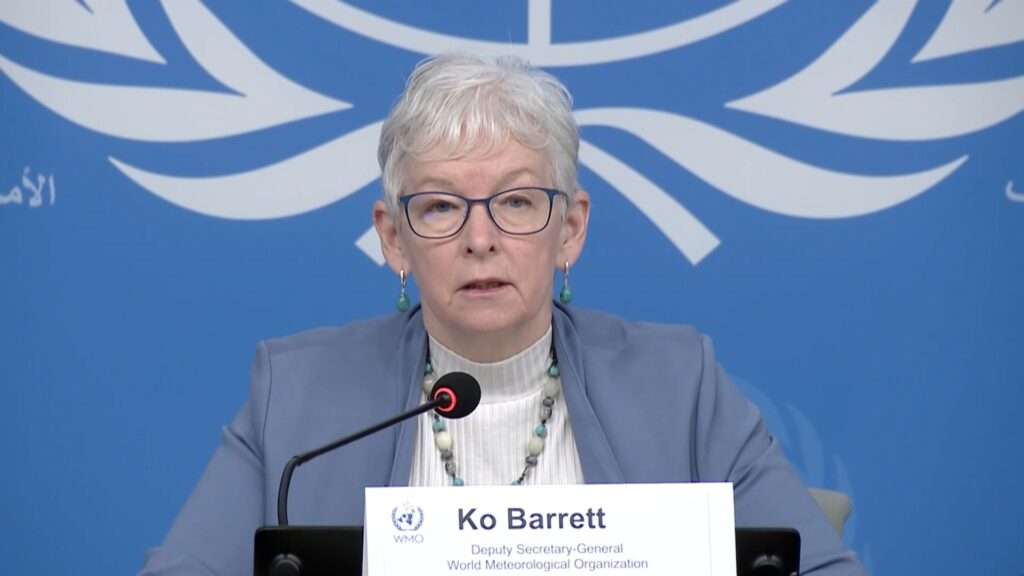The World Meteorological Organization (WMO) has warned world leaders about the urgent need to curb greenhouse gas emissions after new UN data revealed record-high levels.
As countries prepare for the UN’s Climate Change Conference in Baku next month, the report underscores that immediate, decisive action from major polluting nations is essential to address climate change effectively.
The WMO’s 2024 Greenhouse Gas Bulletin reveals that carbon dioxide (CO2) levels in the atmosphere have reached their highest in human history.
According to WMO Deputy Secretary-General Ko Barrett, CO2 is now accumulating at a pace “faster than at any time experienced during human existence.” This disturbing trend, she noted, will lead to “rising temperatures for many, many years to come” due to CO2’s long-lasting impact on the atmosphere.
WMO data from its Global Atmosphere Watch Network indicates a dramatic increase in atmospheric CO2 over the last two decades. In 2004, CO2 levels stood at 377.1 parts per million (ppm), while in 2023, they reached 420 ppm — a rise of 42.9 ppm, or an increase of 11.4% over 20 years.
The Impact of Each Degree
“These are more than statistics,” Barrett emphasized, underlining the effects of even the smallest temperature increases. “Every part per million matters, every fraction of a degree of temperature increase matters,” she said, citing the impacts of climate change on melting glaciers, rising sea levels, and ocean acidification.
These effects, she explained, will increasingly expose millions to extreme heat, contribute to species extinction, and damage ecosystems and economies.
Barrett pointed to natural events like wildfires and the El Niño weather pattern as significant contributors to greenhouse gas surges, particularly in the second half of 2023. The WMO’s analysis also reveals that while about half of CO2 emissions remain in the atmosphere, over a quarter are absorbed by oceans, with the rest absorbed on land.

Wildfires and Climate Change Fuel Greenhouse Gas Levels
WMO Senior Scientific Officer Oksana Tarasova highlighted the devastating role of wildfires in the greenhouse gas crisis, citing Canada’s 2023 wildfire season as “absolutely dramatic” for CO2 emissions.
She underscored the unprecedented nature of current CO2 levels: “The last time we saw 400 parts per million of CO2 was three to five million years ago. During that time, the temperature was three to four degrees warmer, and sea levels were 10 to 20 meters higher.”
According to the WMO report and data from the National Oceanic and Atmospheric Administration’s Annual Greenhouse Gas Index, since 1990, radiative forcing — the warming impact of greenhouse gases — has surged by over 51%, with CO2 accounting for more than 80% of this increase,
“As long as emissions continue, greenhouse gases will continue accumulating in the atmosphere, leading to a global temperature rise,” the WMO stated, warning that CO2’s persistence in the atmosphere means that current temperature levels will likely last for decades, even if emissions are quickly reduced to net zero.
COP29 Expected To Spur Concrete Action
When asked whether the upcoming UN climate conference in Baku could prompt nations to act, Barrett noted that politicians do acknowledge the latest scientific findings on climate change. “So I do think they are listening; the question is, to what degree will we see that manifest at COP29 in action,” she said.
Barrett emphasized that transitioning away from fossil fuels is critical to protecting future generations. Despite the “lag” in temperature reductions, she insisted that nations must remain committed to climate action.
“We are not to be dissuaded from action. There will be a transformation and a downward trend in temperature in the future. It all just depends on how quickly we take action and how fast we can reduce those temperatures.”
WMO Deputy Secretary-General Ko Barrett
As global leaders converge for COP29, the WMO’s message is clear: The climate crisis requires immediate, coordinated global action to stave off the most severe consequences for the planet and future generations.



















